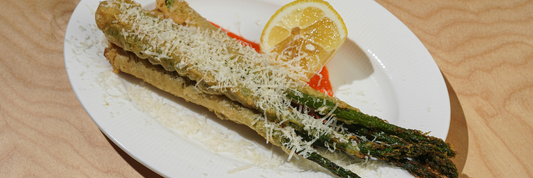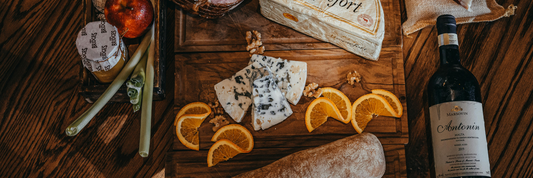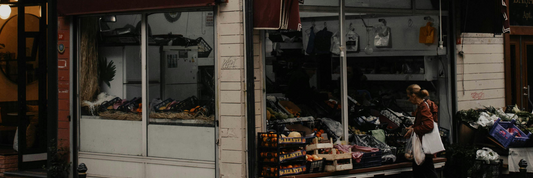If you’ve ever wondered why some iced coffee looks crystal clear in one cup but dull in another, you’re not alone. Choosing between PET and PP cups isn’t just about cost, it impacts safety, branding, and sustainability. At Kimecopak, we understand the challenge. That’s why we’ve created this guide to help Canadian café owners understand PET vs PP and confidently select the best option for fresh, stylish, and eco-friendly Iced Coffee.
- Paper Cups vs Plastic Cups: Which is the Better Choice?
- The Best Packaging for Cold Brew Coffee in Summer
Key Differences Between PET and PP Cups for Iced Coffee

Durability and Strength
When it comes to durability, PET cups have the advantage. Their rigid structure makes them resistant to cracking, even when filled with ice cubes or stacked for storage. This is why many Canadian cafés prefer PET for iced coffee, the cup feels sturdy in a customer’s hand and reduces the chance of spills.
By contrast, PP cups are softer and more flexible. While this flexibility helps them withstand drops without shattering, it also makes them prone to bending or deforming under pressure. For drinks filled with ice and condensation, this can sometimes result in a less stable feel. If your priority is a reliable cup that maintains its shape during busy café service, PET usually wins.
Clarity and Presentation
In the café world, presentation sells. PET cups are crystal clear, making iced coffee look fresh, vibrant, and Instagram-worthy. Customers can easily see the rich layers of espresso, milk, and ice, which enhances the perceived value of your drink. PET also works well with custom printing, allowing your café’s logo or design to stand out sharply against the transparent surface.
On the other hand, PP cups have a frosted, cloudy appearance. While this works fine for juices or teas, it doesn’t showcase iced coffee as effectively. A latte in a PP cup may look dull compared to one in PET. For cafés that rely on visual appeal and branding, PET’s clarity offers a clear competitive edge.
Temperature Resistance
Another important difference lies in temperature performance. PET cups are designed specifically for cold beverages, making them perfect for iced coffee, smoothies, or frappés. They can handle ice and condensation without losing shape, but they’re not suitable for hot drinks heat can cause PET to warp.
PP cups are more versatile. They can hold both cold and hot beverages, thanks to their higher heat resistance. However, their flexibility makes them less ideal for iced coffee, especially when drinks are packed with ice. For cafés that serve a mix of hot and cold drinks, PP might be practical, but if iced coffee is your focus, PET ensures better performance and customer experience.
Safety and Health Considerations

Is PP Plastic Safer than PET for Drinks?
Both PET (polyethylene terephthalate) and PP (polypropylene) are considered food-grade plastics, widely approved for beverage use in Canada. Neither contains BPA (bisphenol A), a harmful chemical often linked with older plastics. This means your iced coffee, latte, or smoothie will not be exposed to dangerous toxins when served in PET or PP cups.
However, safety often comes down to how the cups are used. PET cups are designed for cold beverages only. Exposing them to heat may cause warping and release trace substances. PP, on the other hand, can handle both hot and cold drinks, making it more versatile but its softer structure sometimes leads to customer concerns about “thinness” or reliability.
Food-Grade Certifications and Regulations in Canada
In Canada, food packaging must meet Health Canada and CFIA (Canadian Food Inspection Agency) standards. PET and PP cups sold for food service are tested to ensure they are non-toxic, odor-free, and safe for direct food contact. Trusted suppliers like Kimecopak only source packaging that meets these strict requirements, giving café owners confidence in both safety and compliance.
Chemical Leaching and BPA Concerns
One of the biggest worries café owners have is chemical leaching, the idea that plastic might seep into drinks. The good news:
- PET cups are stable and safe for cold beverages, with no BPA.
- PP cups also do not contain BPA and are safe for both cold and hot beverages within normal temperature ranges.
The real risk comes from improper use, for example, pouring boiling liquids into a PET cup, or exposing plastic cups to extreme conditions. By using cups as intended and sourcing from reliable suppliers, cafés can protect customers’ health without compromise.
Sustainability and Environmental Impact
Recyclability of PET vs PP Cups in Canadian Waste Systems
In Canada, both PET and PP cups are recyclable, but their acceptance varies by municipality. PET (Resin Code #1) is the most widely recycled plastic worldwide and is often accepted in curbside recycling programs. Many Canadian recycling facilities can efficiently process PET into new bottles, fibers, or packaging, making it a more reliable option for sustainability-focused cafés.
PP (Resin Code #5) is technically recyclable but less commonly accepted in municipal programs. This means PP cups may end up in landfills more frequently, even if the material itself is recyclable. For café owners striving to reduce environmental impact, PET has the edge in practical recyclability.
Carbon Footprint Comparison
When comparing carbon footprint, both materials require energy to produce, but PET manufacturing typically results in slightly higher emissions due to its sturdier structure and clarity. However, PET’s widespread recyclability often offsets this, as recycled PET (rPET) uses far less energy than producing virgin plastic. PP is lighter and requires less energy to produce, but its limited recycling stream in Canada reduces its overall sustainability benefits.
Why PET Cups Are Often Better for Iced Coffee
Clear Winner in Presentation and Durability
For iced coffee, visual appeal is everything. Customers love seeing the rich crema of espresso, the creamy swirl of milk, and the sparkle of ice. PET cups deliver unmatched crystal clarity, making every drink look premium and Instagram-ready. Their rigid structure also means fewer cracks or spills during busy service, keeping both baristas and customers satisfied.
Preferred Choice for Canadian Cafés
Across Canada, many cafés and bubble tea shops consistently choose PET cups for cold drinks. The sturdiness reassures customers that their drink won’t collapse in their hand, while the transparent design enhances branding. A cold brew in a PET cup simply looks more refreshing than one in a cloudy PP cup. For cafés competing in a crowded market, that visual edge can make a big difference in repeat sales.

Compatibility with Lids and Straws
Another practical reason PET comes out on top is its perfect fit with flat and dome lids, as well as wide straws for bubble tea. This makes PET versatile for multiple cold beverages—iced coffee, smoothies, frappés, or specialty drinks with toppings. Customers appreciate a secure lid that doesn’t pop off, and cafés benefit from smoother service with fewer complaints.
In short: while PP has its uses, PET is the go-to choice for premium iced coffee. It combines appearance, reliability, and practicality, giving cafés the confidence to serve drinks that look as good as they taste.
Conclusion
Choosing between PET and PP cups for iced coffee is about more than just plastic, it’s about how your drinks look, how safe they are for customers, and how your café aligns with sustainability goals. PET cups consistently deliver the clarity, durability, and reliability that iced coffee lovers expect, while PP may suit more budget-friendly or versatile uses.
By understanding the strengths of each, you can make informed decisions that balance presentation, safety, and environmental impact. For many Canadian cafés, PET emerges as the clear choice for iced coffee, helping drinks look as refreshing as they taste while keeping customers confident in your brand.
Contact Kimecopak today to find the ideal iced coffee cups.
- LEARN MORE about How "Subscribe for a Happy Life" will benefits your business HERE!
- LEARN MORE about Kim Vu, sharing on the challenges she faced as a former restaurant owner, and how she overcame them to create KimEcopak HERE!




